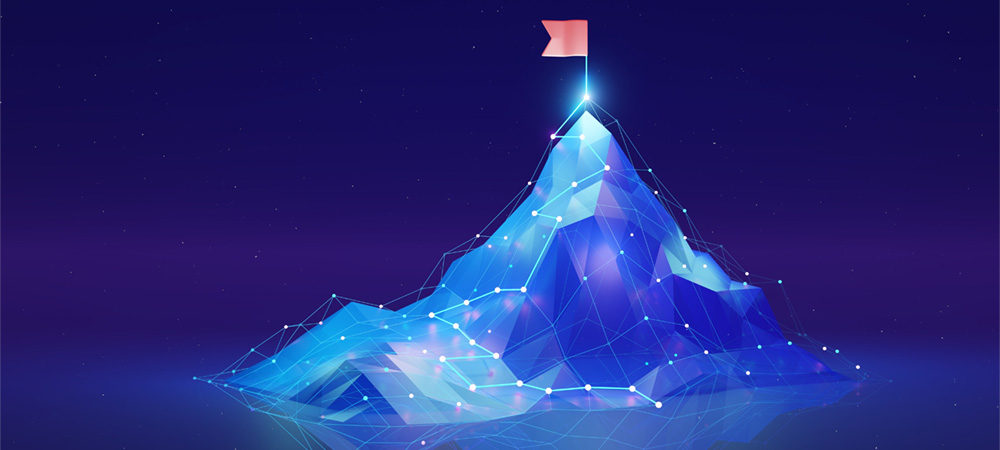Unfortunately, many CIOs face challenges in achieving their Digital Transformation goals.
But fear not…
There are several measures that organizations can take to increase their chances of success. These include conducting a thorough evaluation, creating a solid plan, leveraging external expertise, fostering a culture of innovation, prioritizing customer experience, establishing a governance framework and constantly monitoring and refining progress.
The first step in embarking on a successful Digital Transformation journey is to conduct a comprehensive assessment. This involves evaluating the organization’s current digital status, identifying obstacles to transformation and understanding the desired future state of the business.
Once the goals have been set, CIOs must develop a clear roadmap that lays out the necessary steps to achieve Digital Transformation. This roadmap should align with the organization’s strategic objectives and establish clear milestones for success.
To gain an edge in the process, organizations can seek the help of external experts, such as consultants or technology partners. These professionals can offer valuable insights from their previous experiences with successful transformations and provide innovative solutions to specific challenges.
To create a culture of innovation, organizations must encourage and empower their employees to develop new skills and ideas by providing them with the necessary resources, tools and training.
This requires a shift in mindset where employees are encouraged to experiment and think outside the box. A customer-centric approach is crucial to successful Digital Transformation.
Organizations must focus on understanding their customers’ needs and preferences and creating solutions that provide them with value. To ensure accountability and progress, organizations need to establish a governance model that defines roles, responsibilities, decision-making processes and success metrics.
This model should establish clear communication channels among stakeholders and ensure that everyone is aligned with the organization’s objectives. Remember, Digital Transformation is a continuous process. Organizations must constantly monitor and refine their progress to stay ahead of the game.
Geng Lin, CTO, F5

Across the world, every industry-from banking, manufacturing and retail to entertainment, education and beyond is executing on a digital strategy.
Unfortunately, budgetary constraints, conservative operating models and gaps in the skillsets needed often get in the way.
On top of that, existing enterprise architectures can lack the necessary agility, scale, security and observability to drive technological changes and combat increasingly sophisticated cyberattacks.
So, how do we help those still struggling to fully realize their Digital Transformation journeys?
First, some context on where most organizations are at.
Most organizations today are in the second phase of their Digital Transformation journey. To continue moving forward, here are six essential technical capabilities they must-have:
Dynamic IT infrastructure. The acceleration of Digital Transformation has driven the rapid distribution of societies, users and applications beyond the data center. Traditional enterprise infrastructure architectures cannot adapt to this distributedness as they are based on fixed, static resources and locations. A modern IT infrastructure must be dynamic and able to leverage resources across data centers, clouds and edge environments.
Data and insights. Enterprise data management and analytics can provide business value, even with traditional architectures and policies. Nevertheless, modernization is essential. Digital businesses are increasingly scaling their data architectures while breaking down data silos to mine more accurate, high-fidelity insights. This is key to driving automation and real-time decision-making.
App and app delivery. App delivery has evolved into a distinct discipline of technical capabilities and best practices necessary for scaling, distributing and delivering applications across diverse and elastic infrastructure environments. As pressure to improve performance increases and users expect more from digital experiences, businesses will need to deliver applications more frequently and dynamically to meet changing business conditions.
Observability and automation. A digital business must process and analyze digital signals to adapt to changing conditions. Those who master the skills of observability and automation will gain business advantages. This allows digital businesses to free up resources and double down on innovation, rather than just focusing on sustaining existing business capabilities.
Site Reliability Engineering (SRE) practices. A critical organizational change necessary to effectively run a digital business based on data and applications is the adoption of SRE approaches to operations. By minimizing human intervention and leveraging automation that focuses on meeting service level objectives (SLOs) aligned with desired business outcomes, rather than purely technical measures, organizations can take full advantage of the benefits of data and automation. This allows digital businesses to respond faster and deliver new capabilities more frequently.
Security. There is a broad need for enterprises to detect and eliminate security threats at every layer of the digital IT architecture. Secure deployment and policy enforcement is required, but not at the expense of the business. A traditional, binary security strategy based on a rigid IT architecture will no longer serve the business and can become a hindrance. Finding the ideal balance between security and performance is essential to any risk strategy.
Whichever way you look at it, IT leaders and CIOs are now in the driver’s seat for Digital Transformation. Those that succeed will continually strive to modernize IT by establishing a new standard: an enterprise architecture for digital business.
Clarence Dent, Regional Vice President ANZ, WalkMe

When an organization begins to undertake a Digital Transformation, significant attention is given to the selection of the right mix of software.
The new software is evaluated in the context of existing processes and workflows to determine how this new software should fit in and how the business may benefit from it. Deployment is then undertaken before the new applications ‘go live’.
In a number of cases, however, the transformation process becomes somewhat of a struggle. The organization finds it is not achieving the project’s goals and return-on-investment is lower than what had been anticipated, or worse, the project is abandoned altogether.
Often, these problems can be traced back to a single issue: poor digital adoption. Launching software without a well thought out adoption plan will likely result in a lower ROI than expected, or potentially even outright failure. Without a digital adoption strategy many employees will not be able to make use of new technologies or use them to improve their productivity. Employees may well turn their back on the new applications and revert to old work patterns and processes.
These struggles can become even more of an issue when an organization is trying to reduce operating costs and improve productivity. Senior management will become frustrated by the fact that, even though a significant amount has been invested in the software, returns are proving elusive because people simply aren’t operating the software as anticipated.
This issue naturally intensifies when Digital Transformation budgets are under pressure. The mistake can be focusing on hastening deployment in a fully functional sense as quickly as possible, while consideration of the impact on users is secondary. How quickly and effectively adoption is achieved at complete scale can be the major determinant in realizing anticipated benefits.
Support tools
An effective way to overcome this issue is by implementing the right digital adoption strategy for your organization, complete with a digital adoption platform (DAP). DAPs provide on screen guidance and automation across applications to provide employees with support in context.
Leadership then gains critical visibility into employee user behavior to understand specifically where staff are getting stuck so that they can course-correct the user experience and maximize the value from these Digital Transformation investments. With a DAP deployed across an organization’s tech stack, these insights can then be used to amend workflows where required and enhance the level of support and overall employee experience provided to users.
DAPs can also serve to lower the business risks associated with Digital Transformation projects. Indeed, a Digital Transformation strategy that takes into account adoption at scale can reduce the costs and risks associated with failure to achieve anticipated value. This ensures overall transformation ambitions can be achieved more quickly enabling limited capital resources and resources to be leveraged in other parts of the business.
Chris Ellis, Director Pre-Sales, Nintex

They’re frequently touted as game changing strategies that position organizations for improved performance and future growth. However, all too often, Digital Transformation projects can strike troubles which hinder progress and keep longer term goals out of reach.
Although the specific reasons why such strategies can be problematic will vary between organizations, there are some common steps that can be undertaken to get them back on track.
One way to help a faltering strategy is to identify whether there is a lack of essential skills or experience, which can be addressed by casting a wider net in their search for new talent, both internally and externally.
But sometimes it’s a matter of incentivizing your people. Do they know what’s in it for them? Engaged teams will have a vested interest in the success of your Digital Transformation efforts, so share the expected benefits of your strategy and how you plan to achieve your objectives.
Many organizations will also find they need to make more use of low-code or no-code development tools. Many organizations are making progress on their Digital Transformation plans by acquiring a ready-built solution that can deliver up to 70% of the desired outcome. The remaining 30% can then be augmented over time, utilizing existing contributors without overburdening them.
Check the cultural fit
Digital Transformation goes way beyond simply the deployment of new technologies and platforms. The strategy must be closely aligned with the existing culture of the organization so that it becomes an integral part of daily operations.
If problems are being experienced, review the fundamentals of the strategy and confirm that they are closely mapped with the strategic direction of the organization. Determine whether the strategy is meeting real-world requirements by encouraging feedback from those involved. Providing an anonymous option can help responders feel safe to speak their minds.
A close cultural fit over the longer term is also important. Most Digital Transformation projects end up being long-term initiatives that evolve as an organization grows and develops.
Bring back the true meaning of agility
A third way in which a struggling Digital Transformation project can be helped is by being prepared to change direction as needed. Just because something made sound business sense 12 months ago doesn’t mean it has to remain set in stone.
The management team should undertake regular reviews and be prepared to alter the strategy if it’s clear that change is required. This will ensure the strategy continues to deliver maximum business benefits in the years ahead.
By undertaking these steps, the promised benefits of technology will be realized. Organizations can then confidently expect the investments they make in Digital Transformation to provide the required level of direction and support for their teams.
Click below to share this article

